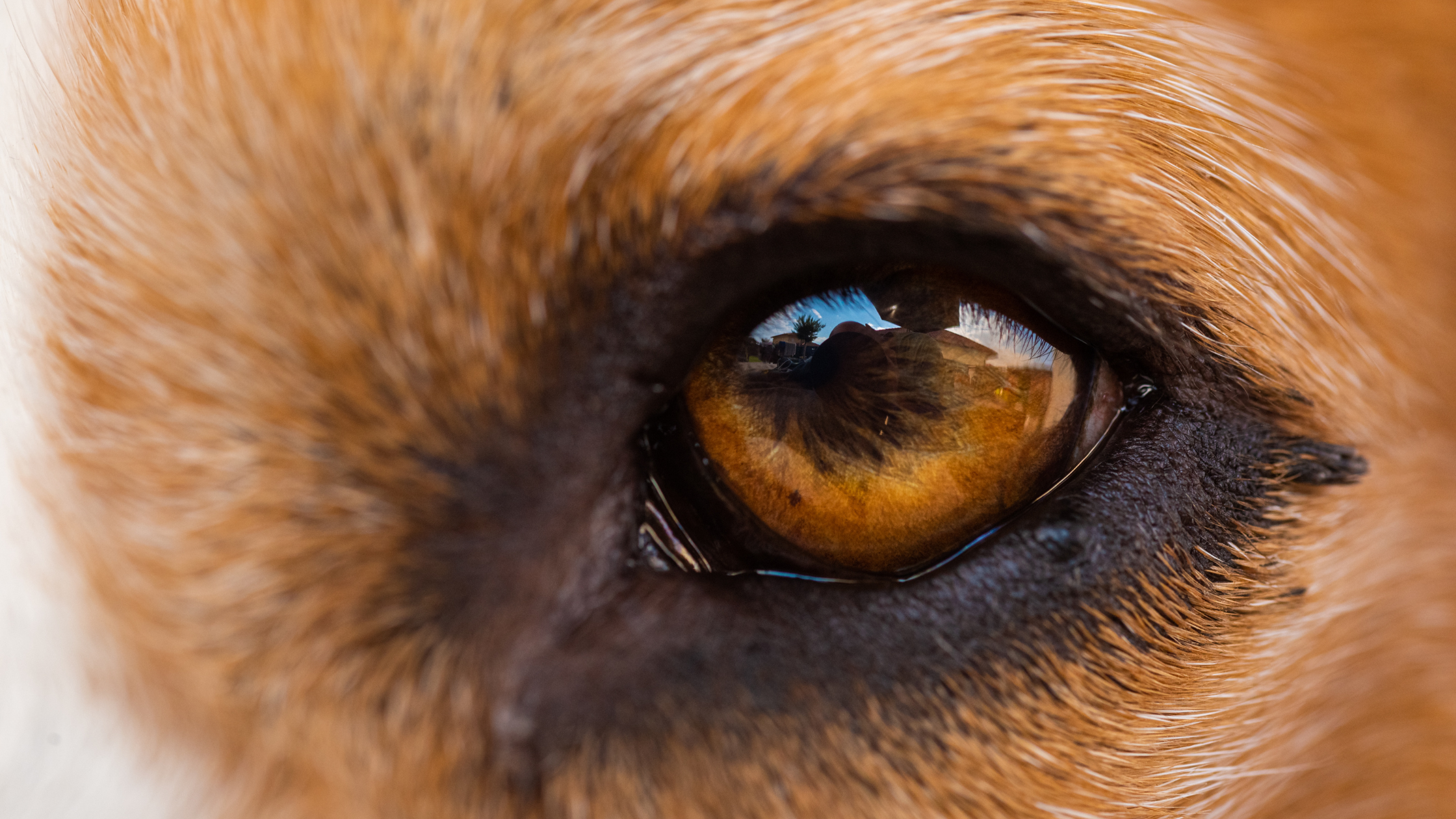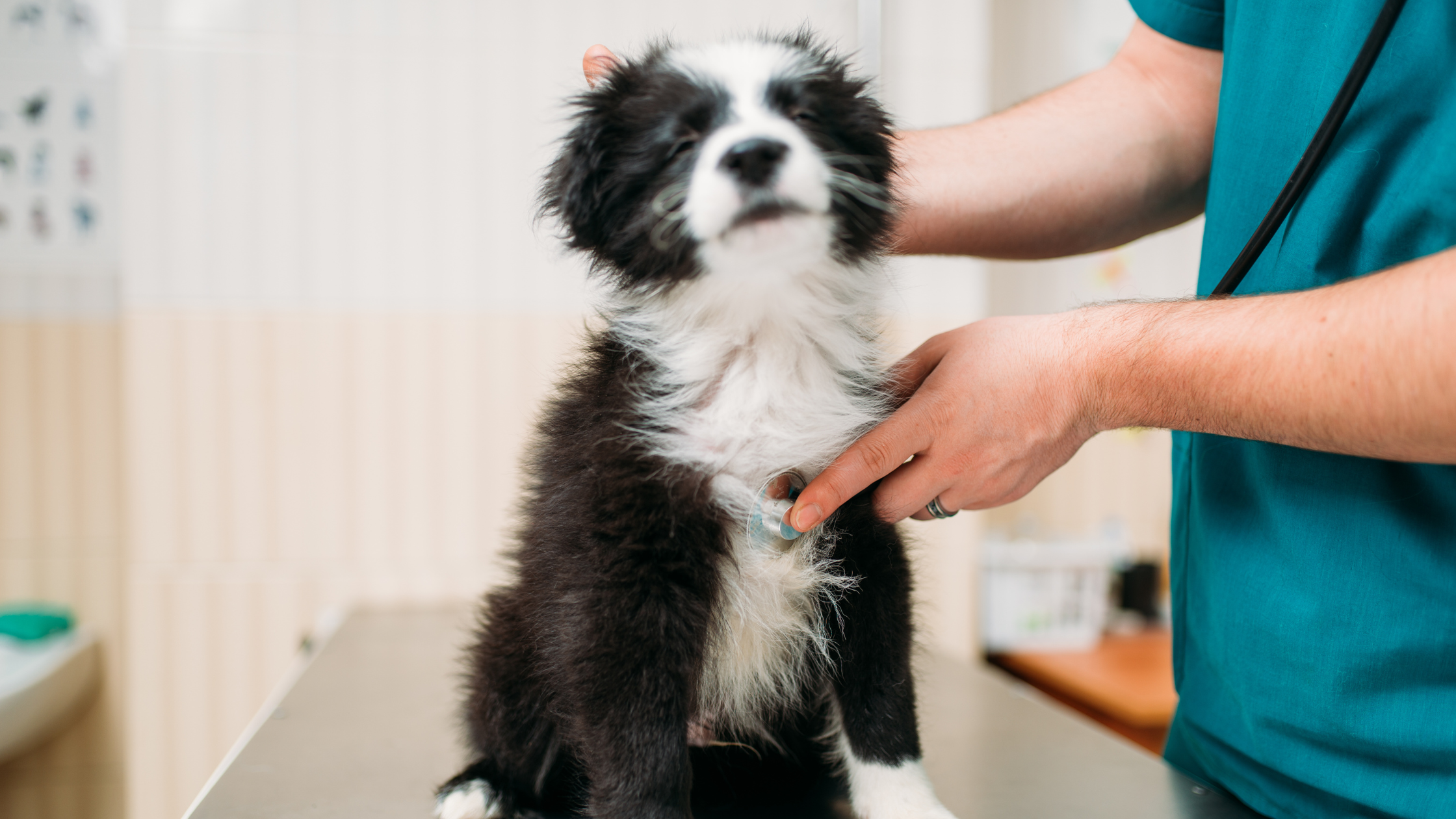Dog Eye Disease: Why do the dog’s eyes tears?

For example, in the case of glaucoma, the pressure inside the eye increases, causing tears and possible blindness, and dry eye syndrome is due to insufficient tears. Allergy to dust or pollen also irritates the dog’s eyes, and certain breeds due to the specific structure of the eyes are prone to the leakage of the tears – the epiform when tears are not restricted and flow out of sight.
Dog veterinary veterinarians-home ophthalmologists who can prescribe special drops, surgery or preventive measures help to properly diagnose and treat these diseases.
Dogs for dogs are a normal phenomenon because it helps fight natural eye irritation with dust, pollen or other stimuli. Tears help wash eye stimuli. The tears produce the tears of the glands and are accumulated in the tears in the canals at the corner of the dog’s eye near the nose.
The tears of the dog’s eyes can be caused by impaired tears in leakage or excessive tears. Dog owners may find that moisture causes red -brown fur around the eyes. The color of the coat around the eyes is due to the usual tear pigment called porphyrin, which can lead to stains that are particularly noticeable in dogs with white fur.
Dog eye disease can occur for a variety of reasons
1 Dog eye diseases as glaucoma, during which excessive pressure causes tears in the dog’s eyes.
2. Viral dog eye disease;
3. Bacterial dog eye disease;
4. Dog dry eye syndrome – a condition where the dog’s eyes lack moisture.
5. Allergy to dust or pollen;
6. Eyelash anomalies: There are several different eyelash anomalies when the eyelashes are ingrown (trichiasis), growing from abnormal spots (dystichiasis) or growing on the inside of the eyelid.
7. Eyelid abnormalities: Sometimes a dog can be born with too much screwdrun (entropion) or folded (ectropy) eyelids. As a result, the skin and / or hair may be rubbed in the eye or are too dry and subsequently tearing.
8. The third envelope fallsthis condition is commonly referred to as the « cherry eye » and occurs when the third eyelid gland leaves the pocket in which it usually sits.
9. Impaired tears leakwhen tears are not removed normally and accumulate on the surface of the eyes.
10. Genetic factorsFor some dog breeds (eg poodles, chicu and pecuno, etc.), excessive eye tears can be normal due to genetically shallow bits. Due to genetics, dogs may have an epiform with a normal nasal tears and without obvious stimuli.
Photo by partner
Viral dog eye disease
Dog eye diseases can be caused by several viruses, which often damage not only the eyes but the whole body. Here are some viruses that are associated with dog eye disease:
1 Dog adenovirus (CAV-1) – Causes infectious hepatitis, but can also affect the eyes by causing iris inflammation (uveitis) and the so -called « blue eye » (corneal edema). This causes the eye cloudy and the accumulation of fluid in the cornea.
2. Dog Plague (CDV) – The dog plague virus can damage various tissues, including cornea, retina and conjunctiva. Dogs with this virus often cause redness, discharge and even visual impairment. The virus can cause secondary inflammation of the eyes or even retinitis, inflammation of the retina.
3. Herpes virus (CHV-1) – This virus is more common in young puppies and causes inflammation of the mucous membranes and cornea, which can cause eye ulcers, scarring and vision loss.
4. Parvovirus – Although more often associated with gastrointestinal problems, in some cases, parvovirus may be complicated and affected by the eyes, especially when the immune system is weakened.
5. Dog flu virus (civ) – Most commonly manifested as respiratory infection, but sometimes it can cause conjunctivitis (inflammation of the conjunctiva), causing redness and eye secretions.
Protection against these viruses includes regular dog vaccinationswhich help reduce the risk of dog infection and prevent the development of eye diseases.
Bacterial Dog Eye Diseases
1 Bacterial conjunctivitis – One of the most common eye diseases caused by bacteria. Mostly caused by bacteria such as StaphylococcusTo, Streptococcus or Escherichia coli; Bacterial conjunctivitis is manifested by redness, purulent discharge and itching of the eyes.
2. Bacterial keratitis – It is an inflammation of the cornea that often results from a bacterial infection after an eye injury or corneal damage. The most commonly determined bacteria – Pseudomonas aeruginosa and Staphylococcus species. Bacterial keratitis causes corneal clouds, tears, light sensitivity and severe pain.
3. Blepharitis – inflammation of the eyelids that bacteria can be caused by such as Staphylococcus or Streptococcus; This inflammation can cause redness, swelling, itching and purulent discharge of the eyelids. Blepharitis is often chronic and requires long -term treatment.
4. Dacryocystitis – Inflammation of the tear bag, which can occur if the tears of the gutters clog and facilitate bacteria to reproduce. Symptoms of this condition include tearing, redness around the eyes and purulent secretions. The most common pathogens are Staphylococcus and Streptococcus bacteria.
5. Uveite – Although it is usually caused by immune disorders or injuries, uveitis can also result from bacterial infections that reach the eyes from other areas of the body, such as blood flow. This inflammation can cause redness, tears, pain and even loss of vision.
Veterinary ophthalmologists diagnose bacterial dog eye diseases by performing eye tests and often take samples to detect bacteria that cause infection. Treatment is most commonly prescribed by antibiotics with eye drops or ointments, and in more severe cases, oral – systemic antibiotics may be prescribed.
Photo by partner
When should the veterinarian who have reddden and tearing the dog’s eyes?
For a dog’s eye tearing, you should contact a specialist if:
• You have noticed an extremely large amount of tears.
• reddened, brown or changed the color of the coat under the eyes.
• The dog is open.
• The dog rubs the eyes in the eyes, digging.
• The dog’s eyes became « glasses ».
Diagnosis of dog eye disease
Veterinary doctors will have a tearing of the dog’s eyes during the examination. In the Begemoto Veterinary Clinic, professionals can measure the amount of tears that have resulted using the Shkin Tears Test. The Shmer test is performed for one minute by inserting a special, crushed, small, tear -absorbing ribbon into the lower eyelid.
Also, a fluorescein test is performed at the Ophthalmologist at the Ophthalmologist at the Begemot Veterinary Clinic. The fluorescein test is performed in suspicion of an eye injury when the cornea is painted with fluorescein and a special LED lamp is observed by altered corneal integrity.
Begemoto veterinarians can also measure the pressure of the eye during the examination of the painless tonometry and make sure your dog’s eyes are tears due to glaucoma.
The owner of each pet should contact a veterinarian if the dogs open with greenish, yellowish or greenish -yellow discharge with tears. This may indicate eye injury.
How are the dog’s eye disease treated?
Dog eye disease can be treated very differently, depending on the main cause. If the cause of dog eye disease is allergic, such as pollen, irritation, the veterinarian may recommend the use of antihistamines in combination with artificial tears to rinse the eyes.
If there are any disorders, such as ingrown eyelashes, eyelid abnormalities, etc., surgery may be recommended to correct the problem. If the dog’s eyes are tears due to bacterial or viral infection, the veterinarian should prescribe prescription preparations to treat this type of disease.
In some cases, treatment is not required if excessive tears are due to shallow eyes or normal condition of that breed. These dogs regularly clean the tear paths with special veterinary cleaners or special veterinary, gentle napkins. This kind of care for dog tearing eyes can help prevent dirt accumulation and secondary bacterial infections.
Where to apply for dog eye disease?
Specialists in their field, innovative and modern equipment working at the Begemoto Veterinary Clinic allow the dog’s eye disease to be identified as soon as possible and the ophthalmologist of the dog is to prescribe the most appropriate treatment method.
Veterinary Medicine Center Begemoto – The vetcinic, located in the center of Vilnius, is a place where not only the health of each four -legged patient is nurtured, but also sincerely cares for the emotional state of him and his accompanying host. Sign up now and give your pet a clear look at tomorrow!









